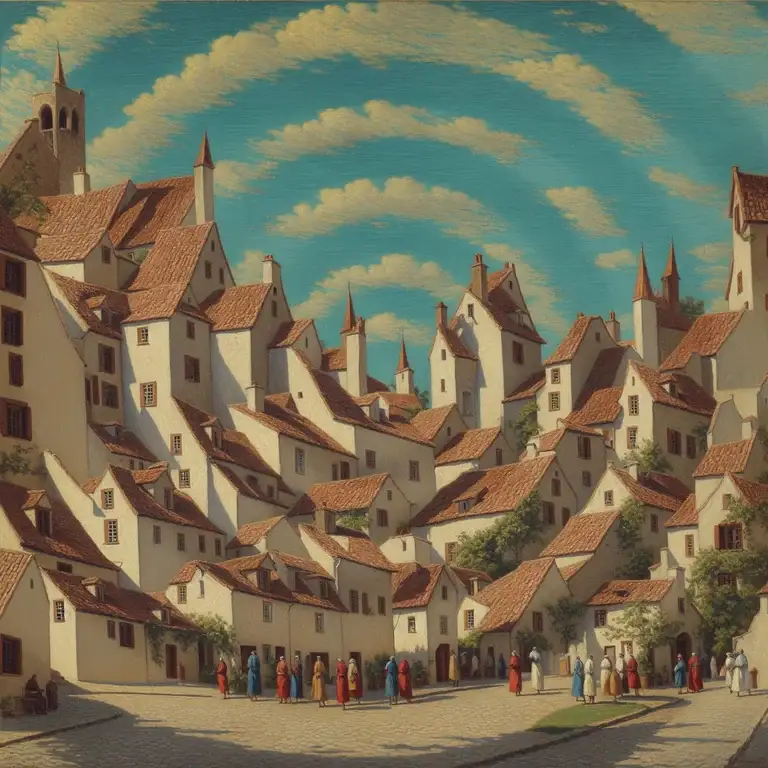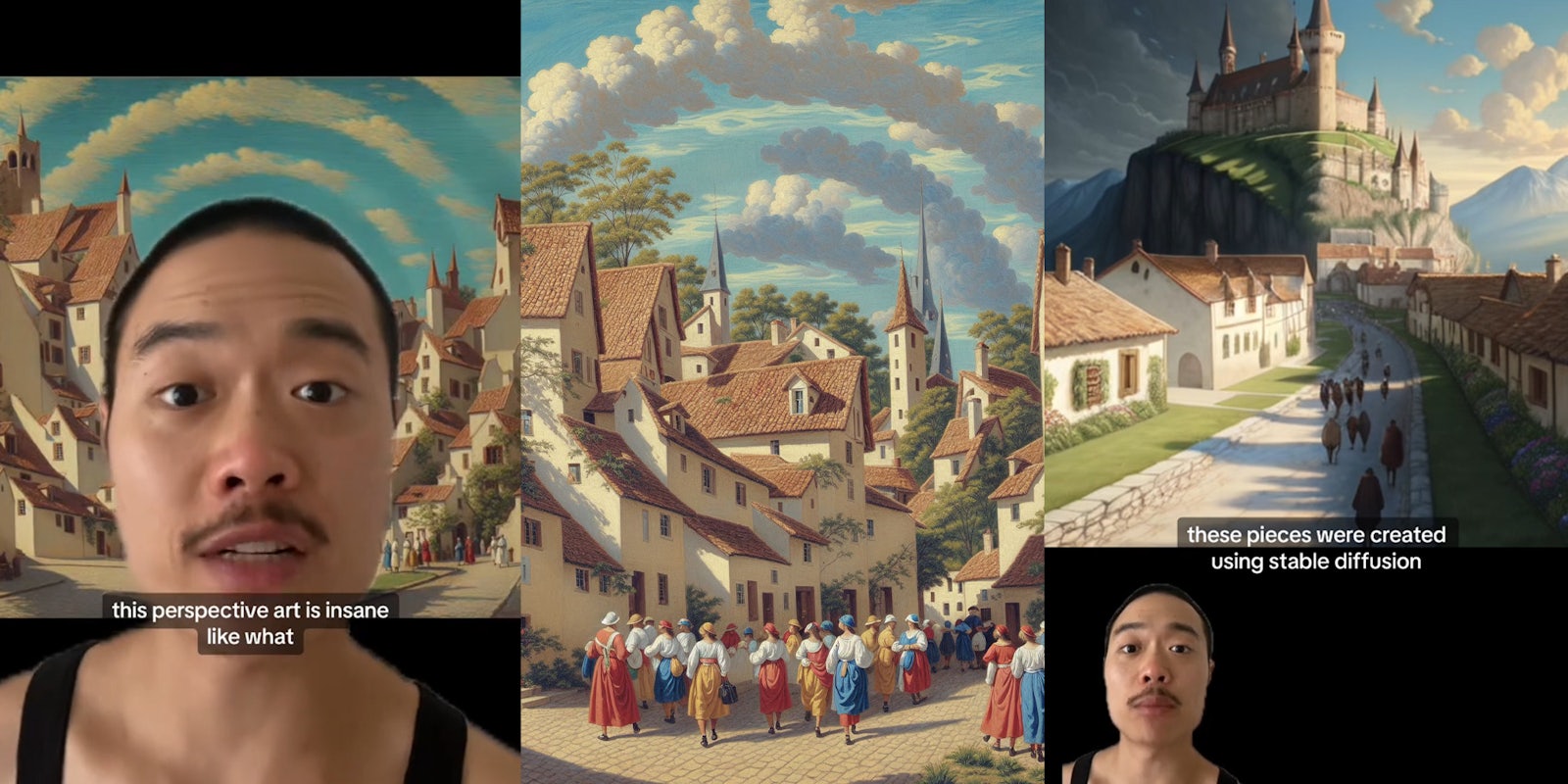A lot of people hate AI-generated art on principle and for good reason.
AI image generators use pre-existing content without permission, scraping the internet for images to digest and regurgitate in similar styles. Publishers and news outlets have already started using AI images instead of paying skilled illustrators. And on an aesthetic level, there’s a lot of pushback against the unavoidably derivative nature of AI art.
But what happens when a piece of AI art looks real enough – and original enough – to fool casual viewers? Case in Point: “Spiral Town,” an AI-generated painting posted to the Stable Diffusion subreddit by a creator named Ugleh:

Generated by combining a spiral with an image prompt for a painting of a medieval town, it’s a style of trippy optical illusion that you’ll also find in traditional illustration.
Ugleh has posted several other pieces using similar techniques – for instance, a landscape where patches of sky and buildings make up a geometric grid – and they’ve provoked an intensely divisive response.
As Spiral Town spread to X and TikTok, many commenters were shocked to learn it was AI-generated. For some AI proponents, this was proof positive that generative tech can measure up to “real” art. Y Combinator co-founder Paul Graham tweeted, “This was the point where AI-generated art passed the Turing Test for me.”
Meanwhile, detractors criticized flaws in the image, arguing that it doesn’t stand up to scrutiny compared to art by a trained illustrator.
As Ars Technica points out, it’s easy to replicate this kind of optical illusion if you know the right prompts. Other creators have already posted similar spiral/grid images, with Ugleh publishing a step-by-step guide on how to do it yourself.
One of the main points of contention here is the number of commenters saying they thought Spiral Town looked cool until they realized it was AI art. “The tragedy of A/I is this could have been cool but loses all meaning knowing it’s based on theft,” reads one popular retweet.
But AI fans see these reactions as irrational anti-AI bias. One described this attitude as “like gritting your teeth and refusing to enjoy amateur song remixes or fan-fiction.” If you enjoyed Spiral Town out of context, is it “virtue signaling” to change your mind when you find out it’s AI-generated?
Ultimately though, this shift in opinion is an entirely normal way of reacting to art. Plenty of people stop enjoying a creator’s work due to their IRL behavior. For instance, Harry Potter fans who abandoned the fandom due to J.K. Rowling‘s politics, or film buffs who oppose Woody Allen and Roman Polanski’s continuing careers after appreciating their older movies.
The backlash against AI art is mostly founded in ethical concerns. So if someone already rejects this technology on those grounds, a single image is not going to change their mind.




